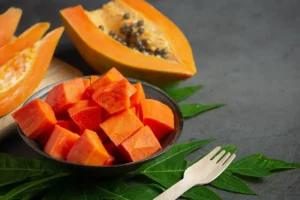Sun exposure is a part of everyday life, but prolonged exposure to UV rays can lead to unwanted tanning, dull skin, and uneven pigmentation. While several over-the-counter tan-removal products promise quick fixes, natural remedies provide a safer, affordable, and chemical-free alternative. In this guide, we’ll explore the causes of tanning, its impact, and the best natural ways to remove sun tan from various parts of your body for a healthy, radiant complexion.
What Causes Tanning?
Tanning is the skin’s natural defense mechanism against UV radiation from the sun. When exposed to UV rays, the skin produces melanin, the pigment that gives skin its color, to absorb and dissipate the harmful rays. While melanin offers some protection, excessive exposure can lead to overproduction, resulting in darker skin, sunburn, and long-term damage such as premature aging and uneven skin tone.
Why Address Tanning?
Removing tan isn’t just about improving appearance—it also restores skin health by exfoliating dead cells, brightening pigmentation, and hydrating damaged areas. Proper care ensures long-term skin health while reducing risks of further UV damage.

Natural Remedies for Sun Tan Removal
1. Honey and Papaya: A Glow-Boosting Combo
Papaya’s enzymes gently exfoliate, while honey hydrates and nourishes the skin.
Preparation
- Mash 5 cubes of ripe papaya into a smooth paste.
- Add 1 tablespoon of honey and mix thoroughly.
How to Apply
- Spread the paste evenly over tanned areas.
- Leave it on for 30 minutes and rinse with lukewarm water.

Pro Tip: Use twice a week for soft, glowing skin.
2. Oatmeal and Buttermilk: Exfoliate and Soothe
Oatmeal removes dead cells, and buttermilk lightens pigmentation with its lactic acid.
Preparation
- Soak 2-3 teaspoons of oatmeal in half a cup of water for 10 minutes.
- Add 3 teaspoons of buttermilk to form a paste.
How to Apply
- Apply generously to the affected areas.
- Leave it on for 20–30 minutes, then rinse with cold water.

Pro Tip: This remedy works wonders for sensitive skin types.
3. Turmeric, Coconut Oil, and Sandalwood: A Skin-Nurturing Trio
Turmeric reduces inflammation, sandalwood soothes irritation, and coconut oil moisturizes.
Preparation
- Combine 2 tablespoons of sandalwood powder, ½ cup of coconut oil, and a pinch of turmeric.
How to Apply
- Massage gently onto tanned areas.
- Leave on for 30 minutes before washing with warm water.

Pro Tip: Use this as an evening ritual for deep nourishment.
4. Honey and Lemon Juice: Brighten and Hydrate
Lemon’s natural acids lighten tan, and honey prevents dryness.
Preparation
- Mix 2 tablespoons of fresh lemon juice with honey.
- Add sugar for an exfoliating effect.
How to Apply
- Gently scrub or spread onto tanned skin.
- Wash off after 20–30 minutes with cool water.
Pro Tip: Always use sunscreen after this remedy to avoid sensitivity to sunlight.
5. Yogurt and Tomato: Antioxidant Powerhouse
Tomato reduces pigmentation, and yogurt improves skin tone and texture.
Preparation
- Blend 1 ripe tomato (peeled) with 2 tablespoons of yogurt to form a smooth paste.
How to Apply
- Apply evenly on tanned areas.
- Rinse after 20–30 minutes to reveal brighter, rejuvenated skin.
Additional Tips for Specific Body Parts
Face
- Cucumber and Raw Milk: Soothes and lightens skin overnight.
- Curd and Honey: Brightens and softens skin texture.
Hands and Arms
- Lemon and Sugar Scrub: Removes stubborn tan through gentle exfoliation.
- Raw Potato Juice: Natural bleaching properties reduce pigmentation.
Feet
- Strawberry and Fresh Cream: Hydrates cracked skin while reducing tan.
- Aloe Vera Gel: Repairs damaged skin and restores its glow.

Are Natural Remedies Effective?
While natural remedies are gentle on the skin, their effectiveness varies by individual skin type and the depth of the tan. Consistent use is key to noticeable improvements. Here are some additional tips:
- Exfoliate 2–3 times a week to remove dead skin.
- Always hydrate your skin post-remedy to retain its softness.
- Use sunscreen daily to prevent further tanning.
If natural methods don’t yield results or if tanning persists, professional treatments like chemical peels, laser toning, or medical-grade products may be more suitable. Consult a dermatologist for tailored advice.
FAQs: Common Questions About Sun Tan Removal
1. Can lemon and honey lighten tan quickly?
Yes, lemon’s bleaching properties combined with honey’s hydration can fade tan over time. However, consistent application is necessary for visible results.
2. How often should I use these remedies?
For best results, use natural remedies 2–3 times a week. Avoid over-exfoliating, which can damage the skin barrier.
3. Is turmeric safe for daily use?
Turmeric is generally safe, but for sensitive skin, limit use to alternate days. Diluting it with oil or cream can prevent irritation.
4. Can oatmeal work for sensitive skin?
Yes, oatmeal’s gentle exfoliation makes it ideal for sensitive skin. Combine with soothing agents like milk or yogurt for added benefits.
5. What is the fastest way to reduce tan?
While no natural remedy works overnight, combining exfoliation (like lemon and sugar) with soothing agents (like aloe vera) can speed up the process.
Conclusion
Natural remedies for sun tan removal are an excellent, cost-effective way to improve skin health and appearance without harsh chemicals. By leveraging kitchen ingredients like honey, turmeric, oatmeal, and yogurt, you can brighten and rejuvenate your skin safely. Remember, prevention is as important as treatment—apply sunscreen daily and limit sun exposure during peak hours.
For severe or persistent tanning, consult a dermatologist for professional solutions. With a combination of natural care and preventive measures, achieving healthy, radiant skin is within your reach!

